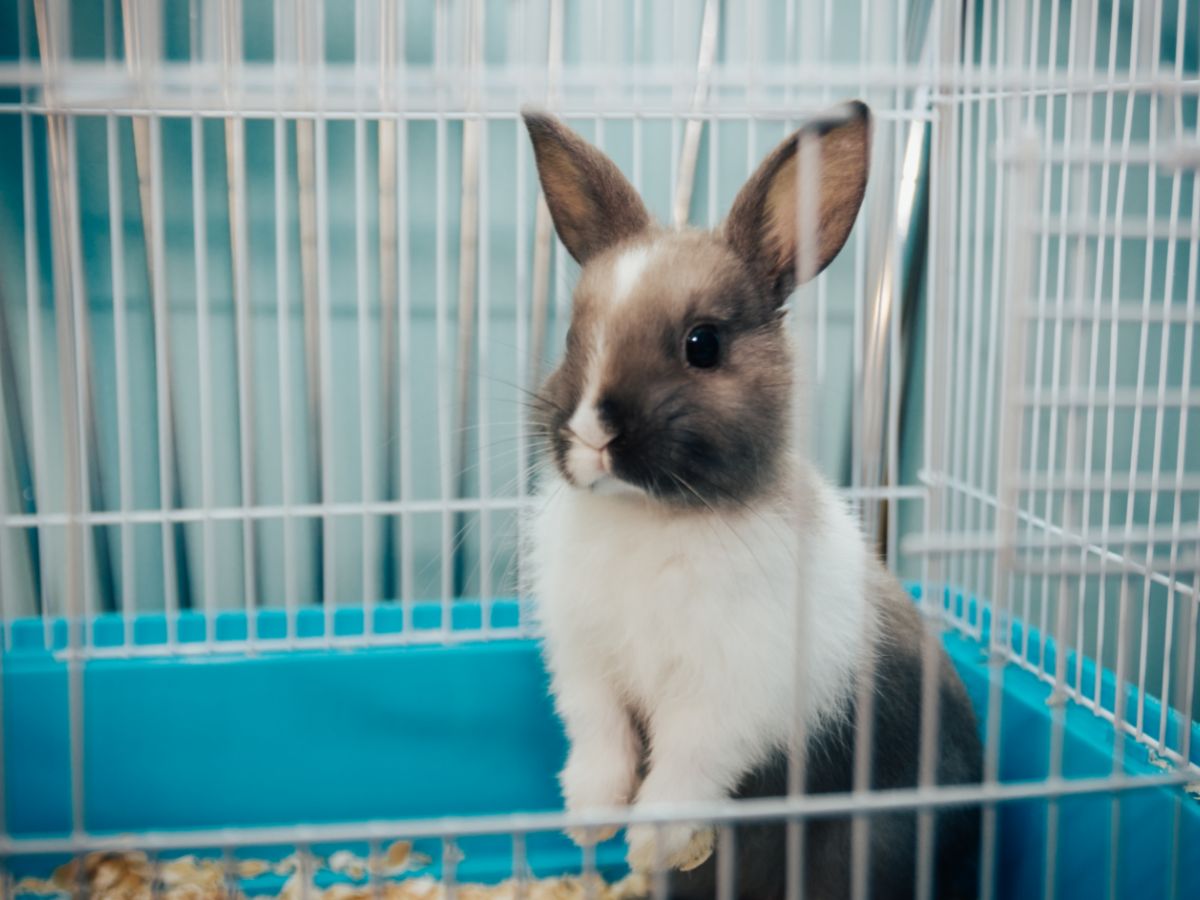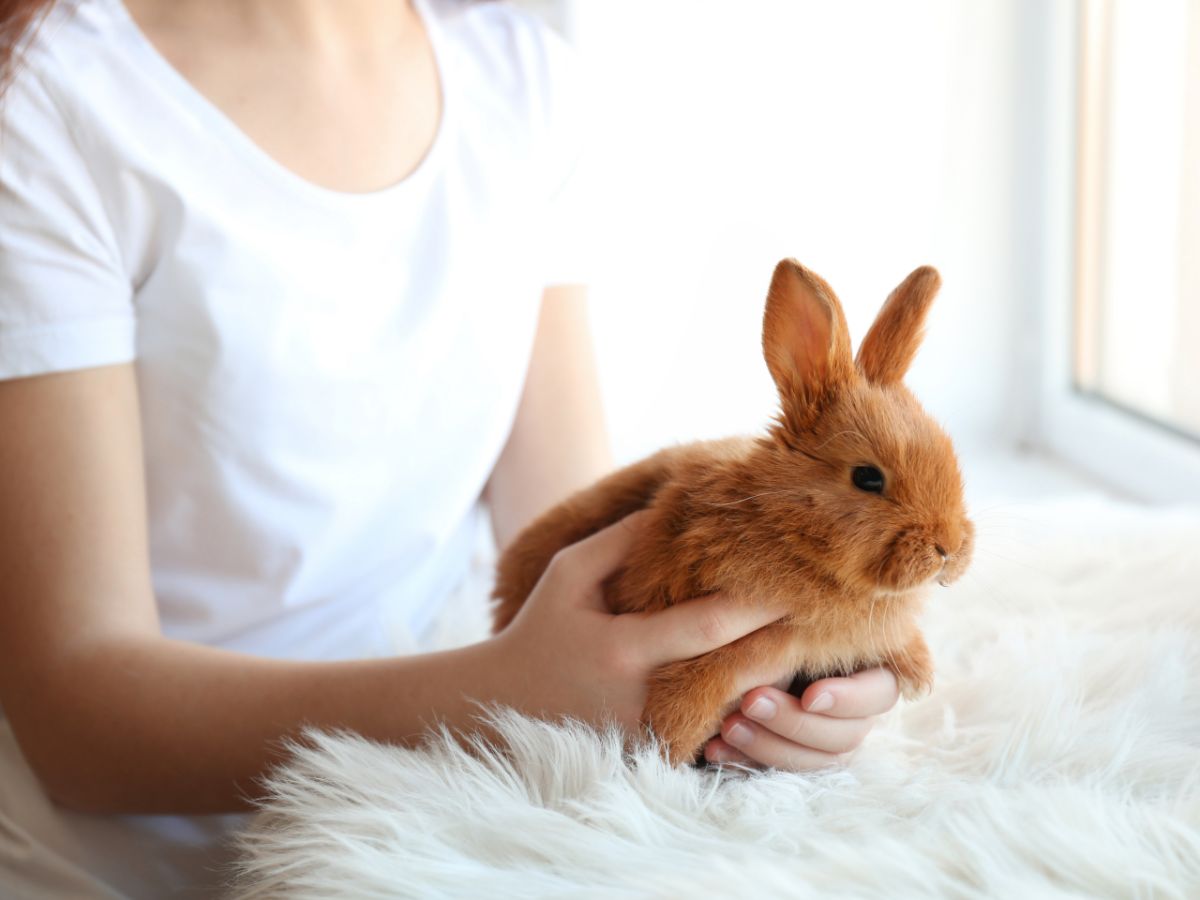Rabbits are crepuscular, meaning they generally sleep during the day but are ready to play at twilight. One of the concerns most owners have is how much space is adequate for a rabbit. In the wild, they love to dig holes and live in the ground. How much space do rabbits need?
You will need at least 6 square feet for sleeping and about 45 square feet of play area for your pet rabbit. But if you want to breed rabbits for their meat, the cage size is about 3 feet long by a 2 feet wide floor space and 1.5- 2 feet in height. Of course, it also depends on the rabbit breed.
It’s difficult to answer the question, “How big is a rabbit cage?” But, if you plan to keep the rabbit as a pet or raise it for meat, you will need different sizes of cages. And there are practical considerations, such as the amount of space you have and the breed’s size. So, let’s look at what you’ll need to know.
Contents
How Much Space Does a Rabbit Need?
Rabbits are a good animal as a pet, and children love them because they are soft and cuddly. However, knowing what your bunny needs and how to make it feel safe are essential.
The primary space requirements of rabbits are taken into consideration. They need a place to exercise and a safe place to rest. Instead of giving the bunnies an endless amount of space, it is more crucial to ensure they feel secure.
Constructing a rabbit hutch and run can satisfy these requirements, and it is preferred if rabbit pipes connect the two areas because this creates an environment similar to the one where a rabbit would thrive in the wild. Even the cutest pet bunnies still have instincts, despite being domesticated.
Fortunately, rabbits are happy to spend considerable time in what we consider a small area. They carry out this activity in the wild while tucked underground in a cozy burrow. This can be done at home with a rabbit hutch or a cage.
Even when kept in a hutch, a rabbit needs room to spread out and move around. Therefore, you will need a hutch or cage with a floor area of at least 12 square feet for one to two medium-sized rabbits and a run with a floor area of at least 27 square feet.
Two rabbits should be able to lie side by side in the hutch or cage. The animal’s sleeping quarters must be at least 6 square feet to feel secure. This will be ideal if you can give two runs, a playpen, and more room. It is also important to note that rabbits are territorial, and each rabbit should have their own space, or they will fight.
Does My Rabbit Need a Cage?
Keeping a pet rabbit in a cage is unnecessary but advised. However, it’s best to keep an untrained rabbit in a confined area like an exercise pen or a large enclosure if you won’t be home to watch it or when you are asleep. The reason is that rabbits are vulnerable to other predators.
Let them out while you get ready for work in the morning and when you get home at night, if possible. The fact that your rabbit has become accustomed to living in your home means it should be able to move around when you are not there. If you want to keep your rabbit happy, give it plenty of room to run around.
Despite the abundance of space, even a rabbit can become bored. A rabbit that is not kept entertained is more prone to get into trouble. There are a variety of things you can use to keep your rabbit entertained around the house.

The Cage Requirements For Meat Rabbits
A commercial doe can produce offspring weighing up to 300 pounds of slaughtered meat in a year. On the other hand, rabbits are not easy to raise but don’t cost a fortune, and their meat is nutritious.
Three cages are required to house a breeding trio of a buck, and two does, as each needs its own space. Enclosures must be protected from both dangerous animals and the weather, including but not restricted to a shed or an automobile garage.
A 3-foot by 2-foot floor area and a 2-foot ceiling height is ideal for raising meat rabbits. The best way to meet the cage requirement for your rabbit is for a rabbit to be able to stretch and not touch the sides. Rabbits also need to stand upright on their hind legs.
Welded double-galvanized 14-gauge wire is the best choice for cages. In addition, the bottom and sides of the cage should be made of strong galvanized hardware wire (1/2-inch by 1-inch). To prevent sore hocks (feet) and making it easier for excrement to fall through are two benefits of using thicker gauge wire cages.
For safety, some additional wire may need to be run up the sides of the does’ pens. Also, install hinges on the cage doors to swing inward instead of outward to prevent your rabbits from accidentally opening them. Wood structures or metal frames can be used to support the external cage structure.
Set up the cages three to four feet off the ground to make handling the animals easier and keep them safe from predators like dogs, snakes, and coyotes. A raised structure is necessary because it’s easier to work with and protect them from predators. In addition, their urine contains a lot of ammonia, which might cause respiratory problems if they are too close to the ground.
Build A Structure With The Weather In Mind
Rabbits can survive in harsh environments, even in the face of extreme weather. However, to avoid snow and rain falling on the hutch, you should build a windbreak and a sloped roof away from the structure if your location experiences strong winter winds.
Rabbits have a more challenging time surviving in hot weather than in cold weather. Keeping your rabbits in a rabbitry in the middle of a hot summer can be deadly for them, so you need to take precautions to ensure they get enough shade from the sun and adequate ventilation. In addition, bucks can become sterile when exposed to hot weather for long periods.
Additional necessities include a hutch, food, water, and a nesting box for your rabbits. In addition, a nesting box for each doe to use when the rabbit “kindles” (gives birth) would be helpful. Bunny nursery dimensions are 18 to 22 inches in length, 1-foot width, and 1-foot height in this wood-based version.
The front end of the nesting box should also be secured with a strip of wood that measures between three and nine inches long to prevent newborns from rolling out. If possible, prop open the hood a bit to allow proper ventilation.
Conclusion
Before buying or constructing a cage, you must determine how many rabbits you will house. For example, keeping rabbits as a pet or raising it for meat requires varied cage sizes. Your pet rabbit needs 6 to 45 square feet. On the other hand, if you’re breeding rabbits for meat, a six-square-foot cage is ideal. Space availability is also a factor you should keep in mind.




